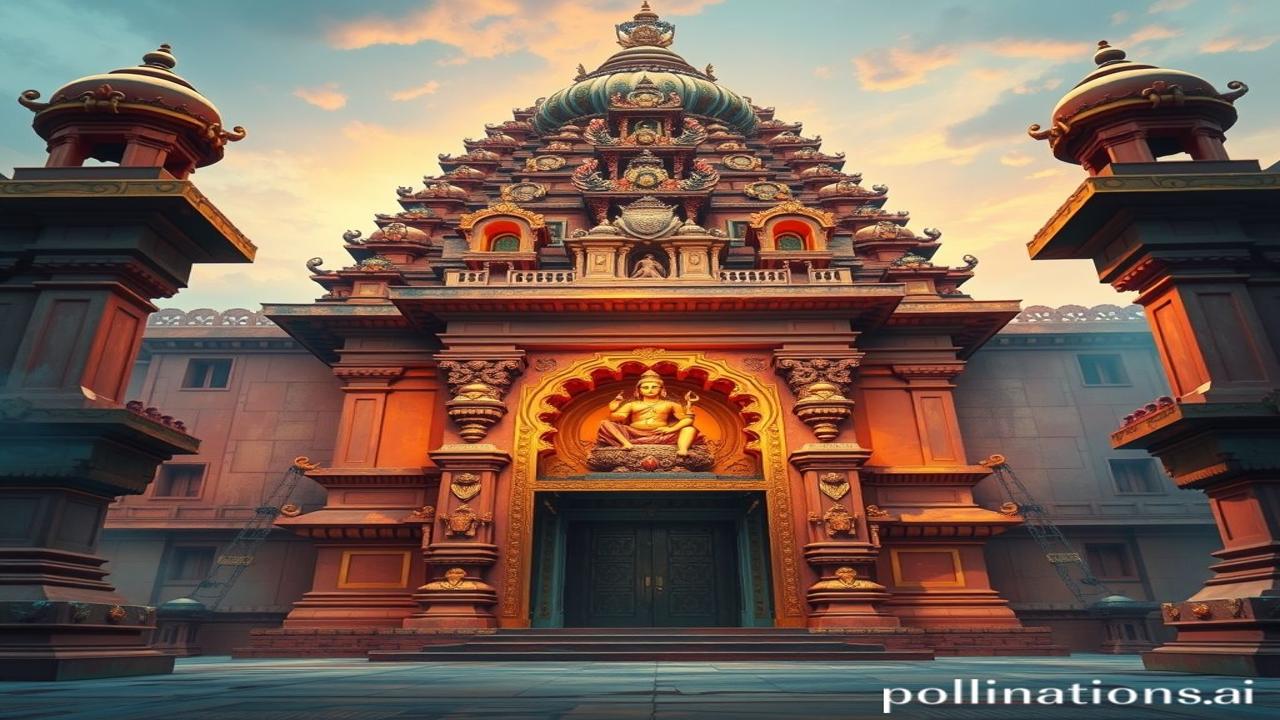Waqt Ki Deewaron Mein Chhupi Kahaniyan: Decoding Mythological References in Indian Architecture
Kabhi socha hai, jab hum kisi purane mandir ya mahal mein kadam rakhte hain, toh hum sirf eent-pathar nahi dekh rahe hote? Hum dekh rahe hote hain ek jeevit itihaas, ek aisi kahani jo hamare purvajon ne pattharon mein likhi hai. Yeh kahani hai hamari mythology ki, hamare devi-devtaon ki, aur unke dwara diye gaye adarshon ki. Indian architecture, especially Hindu, Jain, and Buddhist structures, is deeply intertwined with mythological narratives. Aaiye, chalte hain iss safar par aur dekhte hain ki kaise yeh kahaniyan har eent, har murti mein zinda hain.
Ek Drishti: Itihas Aur Sanskriti Ka Sangam
Indian architecture, with its roots stretching back millennia, is much more than just brick and mortar. It’s a tangible manifestation of our beliefs, values, and worldview. From the towering shikharas of Hindu temples to the serene stupas of Buddhism and the intricate carvings of Jain temples, each structure tells a story rooted in mythology.
- When and Where: These mythological references aren’t confined to a single era. We see them emerging prominently from the Maurya period (322-185 BCE) and evolving through the Gupta period (320-550 CE) and beyond. They are present throughout the Indian subcontinent, from the northern Himalayas to the southern tip of Tamil Nadu, and even extend into Southeast Asia.
- What and Why: The purpose was multifaceted. First, to educate the masses about religious and moral principles through visual representation. Second, to create sacred spaces that evoke a sense of awe and reverence. Third, to legitimize the power and authority of the ruling dynasty by associating them with divine figures and events. These structures served as a window into their beliefs and provided a glimpse into their daily lives.
- Less Known Fact: Did you know that the positioning of deities within a temple, according to Vastu Shastra, isn’t just random? Each direction is associated with specific gods and energies, meticulously planned to harmonize with the cosmos.
Zameeni Sach: Mandir Ke Ustad Aur Bhakt
Imagine the life of an artisan during the construction of the Khajuraho temples. Picture Shilpi Ratan, meticulously carving a sculpture of apsaras, his brow furrowed in concentration, his hands moving with the grace of a dancer. Ma Rukmini ne aaj naye kapde pehne, kyunki mandir mein utsav tha. He hears the rhythmic chanting of mantras, the scent of incense filling the air. He knows that his work will not only adorn a temple but will also inspire generations to come.
Or consider the farmers, offering their first harvest to the temple, their faces etched with faith and gratitude. The warriors, seeking blessings before battle, their hearts filled with courage and devotion. The dancers, their movements echoing the divine stories of the Puranas. The temple was not just a place of worship, but the heart of the community, a hub of art, culture, and social life.
A Dialogue:
“Ratan, yeh murti itni jeevant kaise lagti hai?” asks a young apprentice.
“Beta,” Ratan replies, “hum patthar ko nahi, balki bhagwan ko apne dil mein utarte hain. Jab dil pavitra hota hai, toh kala apne aap prakat hoti hai.”
Dharohar Aur Pehchan: Aaj Ke Bharat Mein
Even today, the echoes of these mythological narratives resonate throughout India. From the Ram Leela performances during Dussehra to the vibrant chariot processions during Rath Yatra, our festivals are steeped in mythological symbolism. The principles of Vastu Shastra continue to influence architectural designs in modern homes and buildings.
Bharatiyata, the essence of Indianness, is inextricably linked to these ancient traditions. These mythological references remind us of our shared heritage, our values, and our connection to something larger than ourselves. The stories depicted on temple walls still inspire us to lead virtuous lives, to uphold dharma, and to strive for spiritual enlightenment.
Mazedaar Tathya Ya Bhram-Bhanjak
Log samajhte hain ki mandir sirf pooja ke liye hote hain, lekin asli sach yeh hai ki woh ancient universities bhi the. Temples served as centers of learning, where scholars taught astronomy, mathematics, philosophy, and various art forms. The intricate carvings often served as visual aids for educating the masses.
Another Fact: Many believed that the construction of grand temples was solely the work of male artisans. However, archaeological evidence suggests that women also played a significant role, contributing to the intricate embroidery, painting, and other decorative aspects.
Drishya Aur Bhavnayein: Ek Anubhav
Imagine standing before the majestic Brihadeeswarar Temple in Thanjavur. The air smells of jasmine and sandalwood, mingled with the earthy scent of wet stone after a morning rain. The walls feel cool and smooth to the touch, adorned with intricate carvings that depict scenes from the Mahabharata and the Ramayana. The sound of temple bells and Vedic chants fills the air, creating an atmosphere of profound peace and reverence. You feel a connection to something ancient, something sacred, something that transcends time and space.
Antim Vichar Ya Uddharan
Yeh toh sirf ek shuruaat hai. Jab hum apne itihaas ko samajhte hain, apni sanskriti ko apnate hain, tabhi hum apni pehchan ko sahi mayne mein jaan paate hain. As the saying goes:
“अतिथि देवो भव” (Atithi Devo Bhava) – “The guest is equivalent to God.”
Let us not just admire the beauty of our ancient architecture, but also strive to understand the wisdom and values it embodies. Let us carry forward this legacy of knowledge, art, and spirituality for generations to come.
